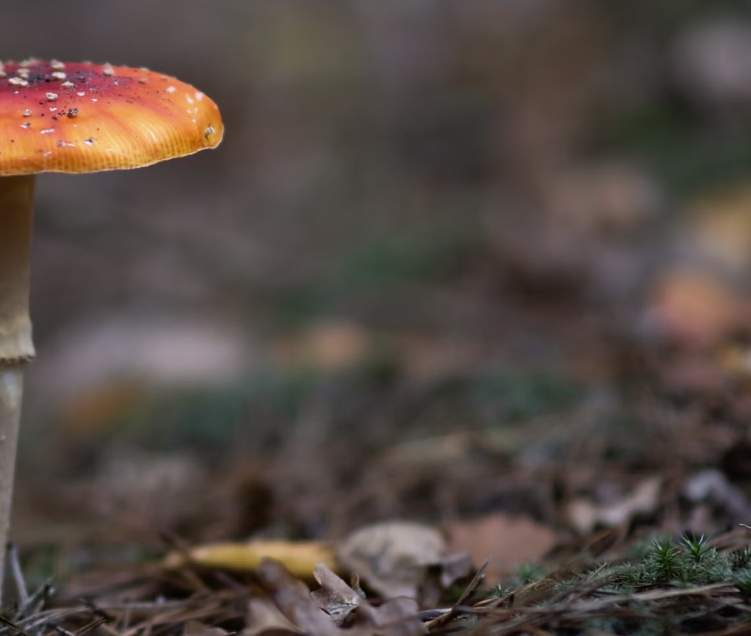Exploring the Therapeutic Potential of Amanita Muscaria
Amanita muscaria, commonly known as the fly agaric mushroom, is renowned not only for its striking appearance but also for its complex biochemistry, which researchers have increasingly focused on for potential therapeutic applications. Recent studies delve into its unique components that may offer benefits ranging from immune support to neurological health.
Biochemical Research and Health Implications
Recent scientific inquiry has revealed that extracts from Amanita muscaria can significantly impact the behavior of microglial cells, the brain’s primary immune cells. According to research published in 2023, these extracts potentiate the production of pro-inflammatory cytokines when these cells are activated, pointing to potential applications in managing neuroinflammatory conditions (Frontiers in Pharmacology, 2023). This discovery opens new avenues for research into neurological disorders where inflammation plays a key role.
Antioxidant and Immune-Enhancing Properties
The mushroom is also noted for its antioxidant capabilities. Antioxidants are crucial for neutralizing harmful free radicals within the body, thereby protecting cells from oxidative stress. This characteristic suggests that Amanita muscaria could play a role in health promotion by safeguarding cellular health.
Moreover, components of Amanita muscaria are believed to bolster immune function. This enhancement could help the body more effectively combat infections and possibly support the development of new antibacterial and antiviral therapies, which are especially pertinent given the global urgency for new treatments in the wake of emerging diseases.
Therapeutic Applications and Mental Health
Amanita muscaria’s potential extends to the treatment of various mental health challenges and neurological disorders. The mushroom’s compounds might influence brain function positively, providing hope for conditions such as epilepsy and Alzheimer’s disease. Additionally, its impact on mental health, particularly concerning addiction and depression therapies, is under active investigation. Compounds found in the mushroom may modify pathways associated with addictive behaviors, offering a novel approach to addiction treatment.
Microdosing and Consumer Health Products
Microdosing, the practice of consuming small, sub-hallucinogenic amounts of psychedelic substances, has gained popularity, and Amanita muscaria is at the forefront of this movement. Research conducted by Baba Masha, involving over 3,000 volunteers, has shown that microdosing this mushroom could lead to improvements in conditions like hormonal dysfunction, allergies, and chronic pain. These findings support the mushroom’s potential for contributing to a holistic approach to wellness.
Consumer interest has spurred companies to develop Amanita-derived products like teas and capsules focused on stress relief and sleep enhancement. These products aim to harness the mushroom’s sedative properties without the complexities of pharmaceutical interventions.
Music and Amanita
Currently, there isn’t substantial scientific research directly linking Amanita muscaria with effects on music perception or performance. However, given the psychoactive properties of this mushroom, which include components like muscimol and ibotenic acid, it’s conceivable that it could alter sensory perceptions and cognitive states in a way that might affect the experience of music.
Psychoactive substances, in general, have been reported to alter the perception of time, enhance emotions, and deepen the connection with art, which includes listening to or performing music. Individuals who have used Amanita muscaria anecdotally report changes in sensory and emotional experiences, which could hypothetically enhance or alter the way music is experienced, either by making it seem more profound, altering the perception of sound depth and space, or intensifying emotional reactions to music.
For concrete studies or robust scientific evidence directly correlating Amanita muscaria with musical experience, further research would be needed. These observations remain largely anecdotal and should be approached with caution given the hallucinogenic nature of the mushroom.
Microdosing, the practice of taking sub-threshold doses of psychoactive substances, has found a niche among music artists seeking to enhance their creative expression and mental clarity without the full-blown effects of psychedelics. Artists often report that microdosing helps them access a more creative mindset, facilitating a deeper connection to their music and creativity. This practice is believed to sharpen concentration, improve emotional depth, and sometimes aid in overcoming creative blocks. Though Amanita muscaria is less commonly cited in the mainstream microdosing culture compared to substances like LSD or psilocybin, the principles of subtle enhancement of perception and mood could theoretically apply to its use as well. As research and interest in the field of microdosing grow, it’s likely that more artists will experiment with a variety of substances, including Amanita muscaria, to potentially leverage these benefits in their creative processes. Read more about Amanita Muscaria by clicking here.
Future Outlook
While the research is promising, the scientific community maintains a cautious optimism regarding the full therapeutic potential of Amanita muscaria. Ongoing studies aim to further elucidate its effects, optimize safe consumption practices, and evaluate its long-term health impacts.
In summary, Amanita muscaria holds significant promise across several domains of health and medicine. As research progresses, it could well become a key player in the future of natural therapies, blending ancient wisdom with modern science to unlock new avenues for health enhancement and disease treatment.







